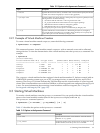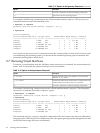
Table 3-2 Options to the hpvmcreate Command (continued)
DescriptionOption
Specifies the amount of memory available to this virtualmachine. Specify the amount
as either amountM (for megabtyes) or amountG (for gigabytes).
-r amount
Specifieswhetherthe virtualmachineismanagedby ServiceguardorgWLM(orboth).
The argument is one of the following:
• SG indicates that the VM Host is a Serviceguard clusternode.
• SG_pkgname indicates that the VM Host is a Serviceguard package.
• GWLM indicates that the VM Host is managed by gWLM.
• NONE indicates there are no external managers.
Do not specify this option. This option is used internally by Integrity VM.
-i package-name
Specifies whether the virtual machine is a distributed guest (that is, managed by
Serviceguard and can be failed over to another cluster member). Do not specify this
option. This option is used internally by Integrity VM.
-j [0|1]
3.2.1 Example of Virtual Machine Creation
To create a virtual machine named compass1, enter the following command:
# hpvmcreate -P compass1
This command creates a virtual machine named compass1 with no network access and no allocated
storage devices. To view the characteristics of the virtual machine, enter the hpvmstatus command. For
example:
# hpvmstatus
[Virtual Machines]
Virtual Machine Name VM # OS Type State #VCPUs #Devs #Nets Memory Runsysid
==================== ===== ======= ========= ====== ===== ===== ======= ========
config1 1 HPUX Off 1 5 1 512 MB 0
config2 2 HPUX Off 1 7 1 1 GB 0
winguest1 5 WINDOWS On (OS) 1 5 1 1 GB 0
winguest2 9 WINDOWS Off 1 3 1 2 GB 0
compass1 12 UNKNOWN Off 1 0 0 2 GB 0
The compass1 virtual machine has been assigned virtual machine number 12, has been created with an
UNKNOWN operating system type, one vCPU, no storage devices, no network devices, and 2 GB of
memory. The Runsysid column indicates the VM Host that runs the virtual machine in a Serviceguard
cluster.If the virtual machine runson the local VMHost, or if Serviceguard isnot configured, the Runsysid
is zero. For more information about running virtual machines under Serviceguard, see “Using HP
Serviceguard with Integrity VM” (page 115).
3.3 Starting Virtual Machines
To start the virtual machine, enter the hpvmstart command. You can specify either the virtual machine
name or the virtual machine number (listed in the hpvmstatus display under VM #.)
The hpvmstart command syntax is:
# hpvmstart {-P vm-name | -p vm_number} [-F | -s]
Table 1–3 describes the options to the hpvmstart command.
Table 3-3 Options to the hpvmstart Command
DescriptionOption
Specifies the name of the virtual machine. Youmust include
either the —P or —p option.
-P vm-name
Specifiesthenumberofthevirtualmachine.Todisplaythevirtual
machine number, enter the hpvmstatus command.
-p vm_number
3.3 Starting Virtual Machines 33


















